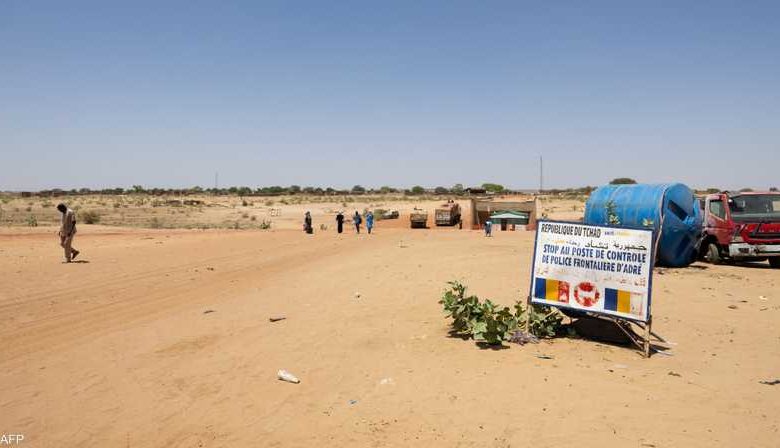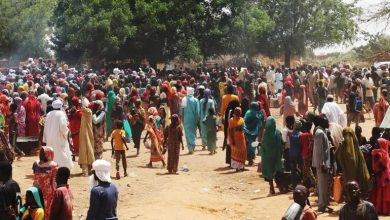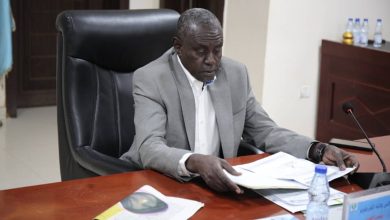Supplement: Adré Crossing

By: Mohamed Hussein
A day after the start of the Geneva negotiations on ceasefire and the search for safe passages to deliver humanitarian aid, which was absent due to the Sudanese army delegation’s absence, the Sudanese Sovereignty Council announced the opening of the Adré crossing on the border with Chad for a period of three months to deliver humanitarian aid under the supervision of the Humanitarian Aid Commission of Sudan. The government statement added that the Humanitarian Aid Commission and the relevant government agency will oversee the situation in Sudan.
The move was welcomed by international and regional mediators, raising questions about the importance of the crossing and military control over it. Is it the only crossing linking the Darfur states and Chad? Are there any negotiations taking place behind the scenes between the army leaders?
Since the invitation by the mediators, it was clear that both sides of the conflict, the Rapid Support Forces and the armed forces, were approaching the situation differently. The statement delivered by the Sudanese government led by President Mohamed Hamdan Dagalo, indicates that this step is in preparation for the Juba peace agreement to be implemented by the Sudan Liberation Movement, headed by Abdul Wahid Nur, and involves a three-way border point with two international entities.
Consultations with the American mediators strongly warned against the failure of the negotiations and the lack of compliance. The clarity in adhering to the mediation, represented by the army, is reflected in the army’s actions regarding imposing the government of President Burhan due to the need for quick support.
The Adré crossing is located on the Chadian-Sudanese border, which stretches for about 1,400 kilometers west of Darfur on the border between the two countries. The crossing connects the city of Adré in Chad to West Darfur in Sudan and is about 30 kilometers from Geneina, the capital of West Darfur.
Adré is not the only crossing with the state of Chad; there is also the Tine crossing in North Darfur, which will soon witness movement during the autumn season. Additionally, there is Umm Dokhon, which lies at a triple border point with two international entities.
The Rapid Support Forces control most of Darfur’s regions, except for Al-Fasher city, the last stronghold of the army. The areas in central Darfur are under the control of the Sudan Liberation Army, led by Abdul Wahid Nur, who declared jihad on April 15.
Before its announcement, the Adré crossing was open for the movement of citizens and the transport of goods, used by Chadian traders for transporting goods. The movement of vehicles would stop at the Akokto market on the Sudanese side and at the Dawan market on the Chadian side. The crossing serves as a vital strategic trade route between Sudan and Chad, even before the war. Through this crossing, trucks loaded with agricultural products, manufactured goods, and livestock move, making it especially important to local traders. Its geographical location helps facilitate logistical operations and has been a key point for international humanitarian organizations. It’s the only crossing that delivers humanitarian aid to West Darfur.
After the killing of Wali Khamis Abbakar in June 2023, thousands of citizens fled from West Darfur to Chad, pushing many international organizations to set up camps and refugee centers in Chad and Central Africa, sharing a 174 km border with Sudan. The mediation was perhaps excluded due to the presence of Russian bases in Central Africa.
The Sudanese army had previously closed the Adré crossing last February due to its use by the Rapid Support Forces for transporting weapons and logistical materials. This was stated by the Sudanese Ambassador to the United Nations earlier. Later, the UN and its partners began using the Tine crossing in North Darfur.
Several Arab and international reports mentioned the United Arab Emirates as being involved in a covert operation to assist the Sudanese refugees by providing air support without doctors, which was critical in treating the injured fighters and transferring the most severe cases to one of the military hospitals.
The rapid escalation of these actions and statements can be interpreted as leaning towards secret negotiations between the leadership of the army and the Sovereignty Council, which could lead to an eventual opening of the borders. Meanwhile, the government of Khartoum announced the continuation of negotiations with the government in Cairo, focusing on the implementation of the Jeddah agreement on May 2023. The consecutive statements from the army leaders and a statement on their website emphasized that Sudan’s sovereignty on its land and people is a priority.
The World Food Programme (WFP) welcomed the opening of the crossing and announced the start of loading two trucks with 6,000 tons of food aid for approximately half a million people, prepared to head to areas facing the risk of famine in North and West Darfur. However, the trucks are still waiting for official correspondence and government approval.
The land administrative unit at the Akokto market is linked to the land port between Sudan and Chad. This leads directly to the city of Geneina, the capital of West Darfur, from where Geneina extends to Tarbi, about 80 kilometers to the north. There is also a road that connects Geneina to the border and from there to central and eastern Darfur and north to Al-Fasher in North Darfur. This road provides a connection between Geneina and the port of Sila on the Chadian border, helping to link West Darfur with Chad.
Neighboring countries and regions in the Makkah, Doha, and Dakar agreements, and also in the protocol of the late Chadian President Idriss Déby, signed in Khartoum on February 10, 2010, where they sought to activate the treaties between the two countries to activate the special protocol for establishing joint forces, which stipulates the creation of a joint military force composed of 3,000 soldiers, 360 officers, 1,500 soldiers, and 180 police officers in both countries. The Sudanese and Chadian forces are sharing nearly 20 border posts between the two countries. Members of these forces work side by side with equipment that allows them to move day and night.
The leadership of these joint forces is subject to rotation every six years under the leadership of both countries. However, the Chadian government announced the closure of its borders with Sudan on April 15, 2023, following the start of the military confrontations in Khartoum. As of the date of this notification, no confirmation has been made regarding the fate of the security protocol between the two countries, despite a statement by the Sudanese Ministry of Foreign Affairs condemning the attack by the rebellious Rapid Support Forces on the headquarters of the joint Sudanese-Chadian forces in Geneina, the capital of West Darfur, leading to accusations by the Sudanese government against Chad.
The tensions between Sudan and Chad escalated in 2008, after incidents in Geneina and Khartoum, resulting in accusations between the two governments. Despite continuous attempts for reconciliation between the two countries, the protocol was implemented to create a joint mechanism for monitoring the borders.
Atr magazine



